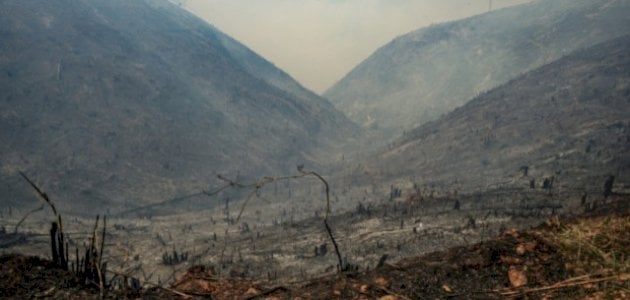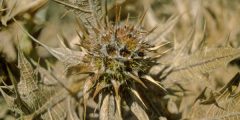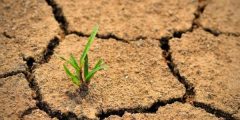Effect of fires on soil
Fires, whether natural or artificial, cause a lot of human damage. Such as cases of death and suffocation, and causing damage to infrastructure, including the destruction of homes and public facilities. It also causes environmental damage, such as burning forests and increasing the percentage of greenhouse gases in the atmosphere.
There are many effects that we do not see with the naked eye. But it appears in the long term, such as what occurs in soil and groundwater, and this effect increases according to the intensity, time and frequency of fires, and their causes, and an explanation of that follows.
Soil biological properties
It leads to a change in biomass, moisture content, and content organic, mineral composition, thermal properties, and effects on nutrient and carbon cycles; Fires reduce the volume of biofuels and organic nutrients present in the soil - soil fertility - and in vegetation, through:
- Losses go into the atmosphere; Through volatilization and heat exchange with the soil.
- Losses through surface water runoff.
- Losses through the filtration process.
- Increasing the rates of nutrient cycling in the soil, and increasing the time required to replenish these resources.
- Redistribution of nutrients in the soil layers.
The deposition of forest fire ash, particulate matter consisting of mineral materials and charred organic components, usually originates from above-ground burned or dead biomass. The accumulation of these deposits enhances soil fertility; Where farmers burn their crops, in years that are not good to enhance fertility for the coming years.
Read also:What does anemone mean?
Soil physical properties
It causes significant erosion of the soil surface and burning Vegetation Makes the soil less stable; Which increases the rate of surface runoff, thus increasing the amount of sediment and organic matter lost by the soil. Due to high surface runoff, especially phosphorus and nitrogen, the most affected soil type is sandy soil, which has a low surface runoff coefficient.
Chemical properties of soil
It leads to change and destruction in vegetation, and burning soil organic matter leads to the production of heat-generating compounds and increases soil acidity. These factors lead to a change in the quantity and quality of water, as increasing surface runoff affects the amount of percolating water. Through the soil, which is stored underground.
That is, causing damage to the quality of the soil. The rate of surface runoff increases at the expense of filtration, and the amount of organic matter and sediments from which the soil is eroded by running into water increases, and its quality is reduced.
Arbitrary forest burning
The artificial burning of forests, which is scientifically planned in terms of the intensity and frequency of the fire, and the area it covers, is considered one of the means of organizing and managing forests. It contributes the following:
- Reduces biofuels in the soil; Of damaged plants, branches, etc., which reduces the possibility of severe fires occurring.
- Reduces the spread of agricultural pests and diseases.
- Removes unwanted species from the plant; Which affects the ecosystem.
- It recycles nutrients in the soil and increases its fertility.
- Promotes the growth of trees and wildflowers.









